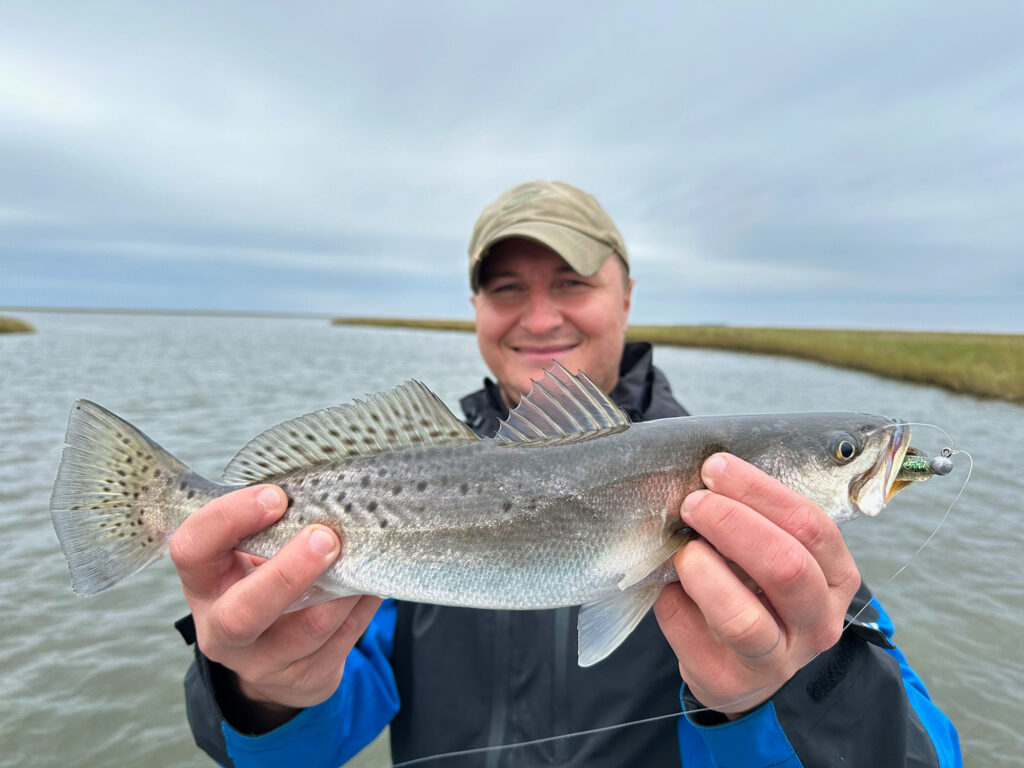
I’m clearly a glutton for punishment. For most anglers, fishing trips involve making a milk run of spots that have delivered for them in the past, and hoping that at least one of them will hold feeding fish on that day. It’s an efficient strategy that certainly increases the chances for success. But to me, it’s as boring as reading a book on String Theory.
The joy for me in the sport of angling is not in reeling in a fish but rather in overcoming the challenge of figuring out the fish. Each bite is just confirmation that the fish were doing what my analysis determined they should be. Once the fish is hooked, I’d just as soon hand the rod to someone else to reel it in.
Because of that, I rarely fish the same spot twice, preferring to hit new areas that require me to read the water and make exploratory casts to determine if my hypotheses were correct. Since my home state of Louisiana has 2.5 million acres of coastal wetlands, the options are almost endless for anglers like me who want to channel their inner Vasco da Gama.

As such, most of my fishing trips actually begin at my desk staring at Google Earth on my Mac. I look for areas rich in hydrographic features that should deliver based on expected conditions on the day I’m fishing.
To me, one of the most predictable occurs during or immediately following an atmospheric feature that most south Louisiana anglers despise — a west wind. Breezes with a compass reading anywhere from about 225 to 315 cause water in Louisiana’s marshes to flee like tourists the day after Mardi Gras. Lakes, bays and lagoons that may have produced fish the day before a westerly wind will be as fishless and nearly as dry as the Mojave.
Since those are the areas that most anglers fish, west winds are as popular in south Louisiana as bland gumbo. But those fish have to go somewhere, and to me, a west wind merely serves to concentrate them and make them easier to catch. That’s particularly true with speckled trout and redfish, although the strategies I employ to find them differ slightly.
If I’m hoping to get a speckled-trout fix, I scan the satellite images and make note of medium-sized bayous that drain marsh lakes or lagoons. From September through May, specks will stuff their faces in these water bodies. They will retreat to the nearest deep water when forced to by Mother Nature. Although major bayous with depths to 20 feet are certainly worth checking, the sweet spots for me are bayous with 6 to 10 feet of depth. Invariably, once on sight, I’ll make my first cast at the first bend of each of those bayous.

If I’m craving the hard hits and strong pulls of redfish, my game plan varies slightly. What I look for in my map study are small bayous that connect two marsh ponds. Redfish seem to always want to be as shallow as possible, often hunting for snacks in water no deeper than the height of their bodies. So when ponds get dry or too shallow to swim, the fish stack up in absurd numbers in these small bayous that measure only 2 to 3 feet deep.
Often the challenge is getting to these tiny waterways in the low-water conditions, an obstacle that’s overcome with the use of a mud motor or with nerves of steel while running an outboard over glorified mud puddles. The latter is the method I employ, so a push pole is standard gear on my boat. It’s saved me from spending the night in the marsh more times than my wife will ever know.
Admittedly, not every medium-sized bayou that drains a marsh lake will hold speckled trout, and not every small bayou between two ponds will be crowded with redfish. So I find several before I ever pull my boat out of the garage, and I’ll hit them all in a day’s fishing. Ground truthing my hypotheses is what makes this sport fun.








